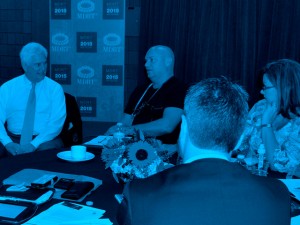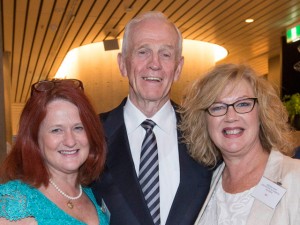In this, the final article in the series which discusses the key findings from the Association of Financial Advisers’ ‘Connecting with Clients’ white paper, Beddoes Institute co-founder, Dr Rebecca Sheils, looks at how the leading advice practices are meeting the communication needs of their clients…
The previous articles in this series have outlined the communication preferences of clients from three different generations: Gen Y, Gen X and the Baby Boomers. They have also revealed the number of communication channels advisers should be using to optimise client satisfaction. This article is the last in this series and considers how well leading financial advice practices are performing on meeting the communication needs of clients and the benefits of getting the communication mix right.
Beddoes surveyed the clients of the top 10 short-listed advisers in the 2013 AFA Adviser of the Year Award to measure the ‘client experience’ of leading practices against the optimal client communication mix guidelines.
One-to-one personal communication
The core business of a financial adviser is to deliver tailored wealth and/or insurance solutions to clients. A personal one‑to‑one communication solution is most appropriate for this given the ‘individualised’ nature of providing advice solutions. One-to-one personal communication refers to the ways in which advisers deliver personal information to clients.
Leading practices do well in terms of meeting their clients’ communication preferences overall (refer to Figure 1). Personal emails are clients’ most preferred type of personal communication and leading practices are responding to this need. Despite this, email as a channel of personal communication is potentially being underutilised relative to the preferences of Gen X (refer to Figure 2).
In contrast, phone calls appear to be over-utilised relative to client preferences for all generations but especially for Gen Y clients. This also appears to be true for formal meetings at the adviser’s office among Gen Y and Gen X clients, while informal catchups (over coffee for example) and meetings at home/work have a place for Gen Y clients and are currently being underutilised with this generation.

Figure 1: Current vs preferred communication methods for personal one-to-one communication across all generations

Figure 2: Current vs preferred communication methods for personal one‑to‑one communication by generation
One-to-many communication
One-to-many communication is used to communicate information on general issues to a group of clients (eg: market updates, legislative changes, trends, etc).
In terms of one-to-many communication, it appears that digital/social media is being under-utilised relative to client preferences across all generations (refer to Figure 3).
While the same is also true for printed information packs and webinars, this is less significant as preferences for these methods of communication are much lower.
Finally, there is good alignment between the use of electronic newsletters and printed newsletters and client preferences at the overall level; however, printed newsletters appear to be under-utilised relative to client preferences among Gen X and Gen Y (refer to Figure 4).

Figure 3: Current vs preferred communication methods for one-to-many communication across all generations
The benefits of delivering to client expectations are clear: advisers who communicate using their clients’ favoured channels achieve higher client satisfaction (refer to Figure 5), have stronger client relationships and have clients that are more likely to recommend their practice.
The key take out from this research is that, first and foremost, financial advisers should ensure that the communication channels they use are aligned with the type of information being communicated and the preferences of their client mix. The research has also shown that clients’ communication needs now include forms of one-to-many communication that are most effectively and efficiently delivered to groups of clients simultaneously, eg: newsletters, presentations, and social media. It is in this area that there is an unmet demand among clients. Financial advice practices should now focus their efforts on addressing these unmet needs by refining their communication strategies based on the findings in this paper and the characteristics of their particular clientele.
The next step for financial advisers is to use the AFA’s ‘Connecting with Clients’ white paper to:
- Critically evaluate the effectiveness of their practice’s current communication methods using available tools
- Consider the need to adopt different communication methods based on the results
- Objectively identify the ‘optimal’ combination of communication methods that will suit the generational profile of their clients, and
- Up-skill and equip the practice with the means to implement any changes
Sign-up to receive best practice tips on how to implement each of the communication channels covered in the white paper.
To read the white paper in full, click here.

Connecting with Clients delivers insights into how consumers interact with advice professionals, and what the best advice practices are doing to set themselves apart. The series is based on the Association of Financial Advisers’ industry white paper research, ‘Connecting with Clients’, conducted by Beddoes Institute and sponsored by Zurich, which measured the most preferred communication channels across more than 500 financial advice clients.
Dr Rebecca Sheils is Director and co-founder of the Beddoes Institute, which specialises in delivering research and consulting services to the financial services sector.
















